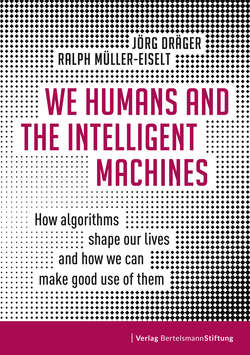Читать книгу We Humans and the Intelligent Machines - Jörg Dräger - Страница 31
На сайте Литреса книга снята с продажи.
Teach to One
ОглавлениеWhat is just starting in Hamburg has gone full circle in New York.11 That is where the algorithmic personalization of learning can be found, hidden away behind a brick facade from the 1930s. From the outside, little suggests that the David A. Boody Intermediate School in Sheepshead Bay is already home to the math lessons of the future.
The ground floor reflects the American norm, with scuffed floors and fluorescent lighting in the hallways, which lead to classrooms on the left and right. On the first floor, however, a new world begins. There is just one large room where some 90 students from three grades can sit together. The building’s former classrooms have disappeared, replaced by a few work areas, separated from each other by dividers and containing chairs of different colors. Electronic monitors hang on the walls. In the morning, the 11- to 14-year-old students stand in front of them looking for their names and their individually assigned learning program for the day. Gazing up, they resemble passengers at an airport trying to identify the gate they are departing from.
The difference, however, to mass transportation could not be greater. All that matters at Boody are individuals and their individual needs. Simply put, the school has revolutionized mathematics teaching. Nine years ago, the traditional classroom model used for centuries was abandoned, the textbooks mothballed. In turn, the lesson plan was overhauled and digitized. The students now learn in groups or on their own, sometimes with a teacher as a tutor, sometimes with an educational game or explanatory video on their computer. Some eighth-graders still struggle with fractions, some sixth-graders can already handle material meant for their older peers. Everyone can learn as fast or as slowly as they are able. Every day, the students take a brief online test to see if they have reached their individual goal at the end of the lesson.
Algorithms in Manhattan evaluate the results. That is where New Classrooms is based. The non-profit organization has developed the new teaching concept used at David A. Boody School and almost 40 other institutions in the US, as a response to the enormous diversity among students. Teach to One is its programmatic name. Each day, New Classrooms collects data to see what students have learned. Which tasks have they mastered, which not? How long did it take? How often are videos watched? Are games preferred over text? The data are analyzed by computers in Manhattan and compared with the outcomes of other learners. In the end, a personal learning plan for the next day is created for each student.
The successes have been impressive. Before Teach to One arrived at Boody in the 2010/11 school year, the performance of the sixth-graders was just below the average of comparable schools in New York City. Two years later, the youngsters’ knowledge level was already 11 percent higher. By now, New Classroom students are learning 50 percent more per year than the American average. Boody hardly enjoys the advantages found at more privileged institutions. The student body is ethnically mixed with many newly arrived in the US. Parents often receive social assistance, 80 percent of the children are entitled to a free school lunch for financial reasons.
That makes Joel Rose, co-founder and chief executive officer of New Classrooms, all the more proud. “Our team has achieved what nobody has ever achieved before: We provide an individual curriculum for thousands of children – every day anew.”12 Thanks to its algorithms, New Classrooms reconciles what was previously irreconcilable; it offers personalized education even in large learning groups, eliminating the contradiction between mass application and excellence. Its algorithms do not replace teachers, but support them: Instead of imparting standard knowledge, educators can assist individual students or small learning groups. As impressive as the stories of Felix, Bettermarks and New Classrooms are, the outcomes are merely what happens when a conscientious doctor or teacher has sufficient time to provide individual assistance. A good physician personalizes medical treatment for each patient, good teachers do the same for their learners. But today, this luxury is no longer reserved for the privileged few. Vivienne Ming’s algorithm can offer it to millions of diabetes patients every day, Joel Rose’s software to tens of thousands of students. At the same time, personalizing algorithms provide unscrupulous profiteers with considerable room to maneuver.
